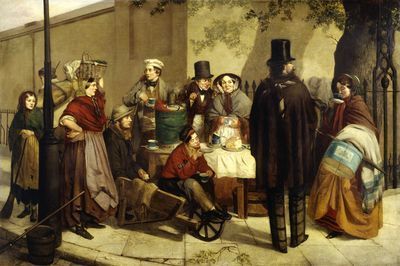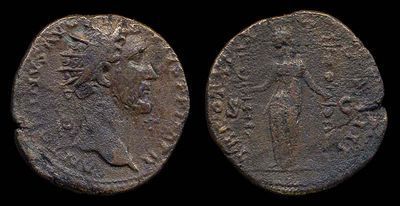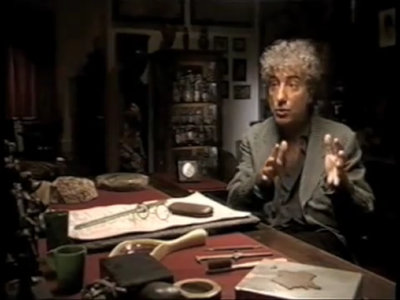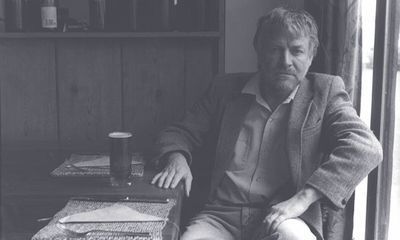Peter Stothard's Blog, page 78
December 12, 2011
Hot Chocolate with Dickens
By THEA LENARDUZZI
The 1970s pop act Hot Chocolate are confirmed to play at Dickens World in February 2012. I can think of no better way to mark Dickens's birthday on the 7th than a rendition of "Sexy Thing" or "It Started With a Kiss".
"Enough already?", asks Michael Caines, and, after umpteen Dickens events, from Holborn to Houston and from museum exhibitions to egg-laying in an "eco-school" in Southwark (though, to be fair to students of the Charles Dickens Primary School, the eggs produced by their "Charles Dickens Chickens" were on sale before the bicentenary celebrations began), I felt inclined to reply in the affirmative. But thinking of Mr Jobling in Bleak House – "what I may think after dinner . . . is one thing, my dear Guppy, and what I may think before dinner is another thing" – I stopped at the Museum of London's "Dickens and London" show after breakfast.
The first major Dickens exhibition since 1970 (were Hot Chocolate present first time round?) includes manuscripts of Great Expectations and The Mystery of Edwin Drood, which remained unfinished when the author died in 1870; a costume worn by the celebrity clown Grimaldi (whose memoirs Dickens wrote in 1838); Dickens's bank ledger; and a shopping list addressed to his butler:
"2 pounds of best lump sugar.
A small cooked ham.
A small Yorkshire pie".
For the charcuterie, specifies Dickens, only Fortnum & Mason's will do.
Beside this is the master's silver soup ladle. Dickens's dinner parties were frequent, with invitees including his friend and biographer John Forster, the illustrator George Cruikshank and Punch's editor Mark Lemon. Food was followed by recitals and parlour games such as snap-dragon, in which contestants plucked raisins from a tray of burning brandy, as described in the Pickwick Papers. And "when fingers enough were burned with that, and all the raisins were gone, they sat down . . . to a substantial supper, and a mighty bowl of wassail . . . in which the hot apples were hissing and bubbling."
From the blacking factory where Dickens worked from the age of twelve (located at Hungerford Stairs), to his coining of the term "sandwich men" for street advertisers ("a piece of human flesh between two slices of paste"), questions of food are central. In his work it supplements plot and character. "A Dinner at Poplar Walk" (1833), Dickens's first published work, describes an abstemious Augustus Minns "biting his dry toast", appalled by his cousin's appetite for ham and his habit of "gulping down port wine at the imminent hazard of suffocation". "A Christmas Dinner" (1835) revels in the festivities organized by Uncle and Aunt George: "a stout servant staggers in with a gigantic pudding, with a sprig of holly in the top [and] there is such a laughing, and shouting...as can only be equalled by the applause with which the astonishing feat of pouring lighted brandy into mince-pies, is received by the younger visitors. Then the dessert! — and the wine! — and the fun!"
The Cratchit family's meagre preparations in A Christmas Carol and Oliver Twist's "three meals of gruel a day, with an onion twice a week, and a half a roll on Sundays" could not be further from the "chubby hands" and "fat dumpy legs" of the Georges. Oliver's audacity is to ask for more to fill his empty vessel, where food is synonymous with kindness, love and, ultimately, life.
At the Museum of London, "Breakfasting Out" (1859), a painting by Robert Dowling, places the coffee stall centre-stage.
Its inclusion is justified, explains the caption, because it brings together "stock London types...reminiscent of a Dickens novel". But this levelling effect – street sellers and wealthy shoppers sipping coffee side by side – was not always so harmonious.
While the coffee-room in Nicholas Nickleby succeeds "in bringing various People together" (as the chapter's subtitle has it), the caffeine effect is disastrous: after a fracas between Nicholas, Sir Mulberry Hawk and his befuddled companion Lord Frederick Verisopht, Hawk is injured in a carriage accident as he flees the scene. He swears revenge on Nicholas and, in a rare moment of sobriety, Verisopht duels with Hawk and is killed. The duel's victor dies in debtors prison.
How different things might have been had they opted for hot chocolate instead.
December 9, 2011
To pulp or to praise him? Divided views on Robert Hughes in Rome
By PETER STOTHARD
The art critic and historian, Simon Schama, writes enthusiastically for our friends at The Daily Beast about Robert Hughes' Rome, a book that, without being itself reviewed in the TLS, has caused a certain amount of discussion here this year.
We did not review it ourselves because it was, in one sense, absurd. As our classics editor Mary Beard pointed out in The Guardian, it deserved to be pulped for the extraordinary number of falsehoods and misunderstandings that it contained.
Despite being a paper much committed to Roman studies, there are many fine books which we cannot review each year. So why waste space, we thought, on one which, as a work of history was, for its first 200 pages at least, so full of error as to constitute a confidence trick on its purchasers?
But this week Simon Schama, one of the finest people with whom to walk through a gallery of art, argues that Hughes's critics have missed the point.
"So although", he writes, "the ostensible subject of his book is the Eternal City, the real tour d'horizon it offers is a walking tour of the hard-structured, brightly lit, and capacious expanse that is the Hughes brain. It's an organ that is Olympian — in that it can survey, in a unified vision, the rolling sweep of the centuries — but without any other sort of lofty detachment."
Fine, one might think. Other art critics too, in Britain and the US have, either ignored or failed to notice the historical nonsense of page after page. It is the art and the author's critical brain that counts. This seems to be the dominant view.
Others at the TLS have argued that we ought anyway to have reviewed the book. We could have pointed out that, while as a tour inside the writer's head it may be matchless, the casual bookshop purchaser could be misled into thinking that he or she might rely on it for other purposes.There is some force in that.
I set out my own best account of the problem in the Australian Book Review which, quite reasonably, had a particular interest in their fellow countryman.
There it should have ended. My assumption, I happily admit, was that the first edition would be rapidly withdrawn, that the pulpable errors would be discreetly erased, and that later Australian editions would lead readers to the writer's brain without leading them into absurdity along the way.
We do not want to seem too pedantic here at the TLS (excessive love of exactitude is sometimes sometimes seen as our vice). Surely the embarrassment would disappear.
So far, the Knopf copy of Rome has not yet arrived from New York. The Weidenfeld & Nicolson edition still sits here alone on the shelves. But a reader from Rome, Michael Mewshaw, has looked at the New York offering for Christmas shoppers and writes this week to suggest that all is still not well.
Some corrections have been made, he says. I do hope that the emperor Antoninus Pius (coinage above) is not still a Christian. But many others have not.
Mr Mewshaw's judgement has also reached The Independent newspaper. I cannot yet vouch personally for what he says. I hope he is wrong. But, before TLS readers are tempted to risk their holiday dollars on a history book that is a brain scan, this is what he tells me.
"While in London last summer I read Mary Beard's review of ROME in the Guardian and your comments in the TLS, followed by your review in Australia. Since I live part of every year in Rome and have done so for the past forty years, I was interested in the subject matter and made note of your remarks about the book's many errors in ancient and classical times.
When the book appeared in the US edition, published by Knopf, I expected to find that these errors had been corrected. Indeed, I carefully collated the US and UK editions and discovered that the majority, approximately 75% of the mistakes, hadn't been corrected at all.
What's more, neither you nor Ms. Beard mentioned that there are similarly howling mistakes in other sections of the book. Some of these suggest that Hughes has no familiarity with the city's layout, especially in its present-day form. He mislocates the Stadio dei Marmi, Mussolini's fascist extravaganza for the Olympic Village, in EUR, not north of the city where it actually is. He mislocates the Villa Medici, saying that's it's at the "head of the Spanish Steps," when in fact that's where Trinita dei Monti is. He laments that Piazza Barberini has been turned into a parking lot where cars sink their snouts into the celebrated Triton Fountain. In fact, the area has been forbidden to parked cars for three decades. He says that the statue of Giordanno Bruno in Campo de' Fiori is banked with flowers so tall that they cover the plaque commemorating his martyrdom. In fact, the flowers are nowhere near the statue. Hughes describes Augustus' tomb as a Roman site that is now desecrated with trash and empty bottles tossed onto it by passing pedestrians. In fact, the tomb has been for decades surrounded by a fence that prevents pedestrians from coming anywhere close to it, and in the last few days when I went to see it, there was no trash at all anywhere near the monument.
Hughes describes at length the Ara Pacis, but at no point mentions that it is now housed in a spectacular if controversial modern building designed by Richard Meier that was constructed almost a decade ago. Mention of the Meier building isn't the only thing missing from the book. Strikingly, given Hughes' dependence on other people's histories and studies, he doesn't include a single footnote. Often there's the impression that anecdotes and ironies that have been recycled for centuries are somehow Hughes' original observations.
I'm more than willing to accept Hughes' opinions and his pontifications. He's entitled to them and he can be amusing even when I disagree with him. But these factual errors are quite remarkable and call into question the author's judgment about other matters.
That Hughes hasn't insisted that they be corrected, hasn't explained them and that Knopf hasn't held his feet to the fire, are like wise flabbergasting. But all of this pales in comparison to the fact that Simon Schama reviewed the book for the Daily Beast/Newsweek, was rapturous in praise, and did not mention a single error.
The reviews in the daily New York Times and Sunday New York Times were similarly impressed with the book and while the Sunday Times mentioned mistakes, it delivered its verdict that they made no difference. Finally, I would add that I'm no expert on the Renaissance or the Baroque or 19th century Italy for that matter, but I'd be willing to wager that a careful reading of those sections by a knowledgeable historian and/or art critic would turn up equal numbers of factual errors."
December 8, 2011
Worth a new Mass?
By RUPERT SHORTT
How should seminal texts from the remote past be translated or otherwise recast in a contemporary idiom? When it comes to liturgy, the matter is of much more than academic interest. British readers, especially, will be familiar with the ferocity of quarrels between Prayer Book traditionalists and modernizers in the Anglican Church. Now, though, the rumblings are coming from English-speaking Catholics, whose own services have been changed by the new translation of the Missal introduced earlier this month.
There are two broad schools of thought about translation. In one, described by the biblical scholar Eugene Nida as dynamic equivalence, entire sentences are reconceived as if written in normal modern English, with subordinate clauses and avoidance of repetition. Others, though – including Robert Alter, another distinguished voice – believe that this approach is based on a misunderstanding of literary translation. For exponents of formal equivalence such as Alter, the translator's job is not to make the reader believe that the text was written in normal modern English in the first place, but to suggest the flavour of the original language; and this can be achieved only by a measure of imitation and by refusing to gloss the meaning of the original through paraphrase. The King James Version largely sticks to formal equivalence. More recent translations, including the New Jerusalem Bible and the Good News Bible, use dynamic equivalence much more extensively. A notorious liturgical example of formal equivalence comes in the Book of Common Prayer collect that begins "Prevent us O Lord in all our doings", where "Prevent" (a literal rendering of prevenire) means "Go before".
Pope Benedict – who wishes the Latin Mass had never been replaced by vernacular versions in the first place – clearly stands in Alter's camp. Aware that there is no going back on the vernacular, he has long set his sights on at least securing a more stringent English-language version of the Missal. His chief concern about the liturgy launched in 1973 lay not just with its perceived banality, but also with its whiff of Pelagianism – the heresy of stressing unaided human resources, while downplaying the centrality of divine grace. The new Missal thus sticks more closely to the Latin original in emphasizing the reverence and humility due to God.
But even some of those who share Vatican reservations about the 1973 Missal nevertheless fear that the latest version creates fresh problems in the process of solving others. High among the list of complaints is that the new language is artificial. The "cup" elevated by the celebrant has become the "chalice", for example; the simplicity of "I am not worthy to receive you, but only say the Word and I shall be healed" has been replaced with a reference to the centurion's comment "Lord, I do not deserve to have you come under my roof"; "one with the Father" has given way to what in English sounds like theological jargon, namely "consubstantial"; and Christ's blood is no longer shed "for all" but "for many".
The pity is that a fine new translation, agreed by Anglophone bishops' conferences before the turn of the millennium, was unjustly swept aside by allies of the then Cardinal Ratzinger, who assembled a new team to start the process all over again. Given the difference between English and other languages, the powers that be in Rome would have done better to let native speakers take ownership of the process without interference. My interim verdict is that the 2011 Missal is a curate's egg. Only time will tell. A TLS review will appear next year.
December 3, 2011
Perambulatory Christmas Books, part 9
Perambulatory Christmas Books, 5th series, Part IX. Charity shops once had the reputation among book hounds as a place to sniff out a genial bargain. Then along came Oxfam Books, the charity's dedicated bibliographical arm. A dealer in Salisbury accused Oxfam of being predatory, undermining secondhand shops by opening up nearby. We heard the same complaint made by dealers on our perambulatory circuit, although one, Sebastian Sandys of LXV Books of Bethnal Green, said he would welcome Oxfam, believing it would promote the area as a bookish quarter.
Our job is not to have opinions, but to find a neglected work by an established author, for about £5, to banish Christmas giftbook blues. We do not seek cut-price collectibles; all our purchases are intended to be read.
The largest Oxfam Books we know is in Marylebone, the smallest in Balham, with Turnham Green in between. They have in common a certain soullessness. Don't expect tea (Walden Books), Chopin improvisations (Archive Bookstore), unworldly erudition (The Flask) or even an argument. We find it hard to think of a used bookshop in London or Edinburgh that lacks character; equally, of an Oxfam Books that possesses any. That said, we have found enough there to keep the spectre of that second Sweetheart Stout at bay, as darkness falls. There is also the humble consolation of putting food in a hungry belly.
In Oxfam, Marylebone, we picked up The Transgressor (Le Malfaiteur) by Julian Green. Born in France to American parents, Green (1900–98) wrote some fifty books. At the time of The Transgressor (1958), several had been translated into English. Yet it is fair to say that he is unread here now. The jacket quotes the TLS: "A minor masterpiece". The name of Balzac is invoked. "No one since Alain-Fournier . . .". What happened? One answer is that English readers fell out of love with French literature round about 1970; Green ceased being translated at the same time. Another reply might hold that his novels are too full of the musk of antique shops and Catholic churches. Sexually ambiguous figures, neither out nor in, evince too much frustration, not enough perversity. The transgressors of The Transgressor have nothing in common with the horribly attractive monsters of Les Enfants terribles, for example.
Still, we are mildly better educated than we were before. It cost £4 to be so, and we got a handsome hardback in dust jacket as a prize for turning up. Curiously, the author's first name, usually "Julien", is repeatedly "Julian" here.
December 2, 2011
Our Christmas cards this year
BY PETER STOTHARD
About ten years ago, when austerity was a rarer word in the lexicon, the TLS printed its own Christmas cards, based on a painting that hangs in the Editor's office.
It was not an especially festive card. But then the TLS is not famous for festivity at this time of the year, holding our sole annual party in June and preferring often to have even our office goose or turkey in March.
The painting is called The Estuary. It is mostly grey-beige river and sky. A barely sketched man in a hat stands up in a small boat. There are other empty boats. Rains seems certain. Good cheer is discouraged.
The painter was Philip Wilson Steer. And in 1939 his watery work was was a gift to Bruce Richmond (Editor of the TLS 1902-37) from T.S Eliot, Virginia Woolf and other luminaries.
It is our office heirloom.
It also made a fine Christmas card — and I have been using it ever since.
Each December our office suprema, Maureen Allen, says that it looks down-at-heel to send the same card year after year. And each year some distinguished recipients, at her irresistible insistence, have enjoyed angels and holly instead. I hope they have appreciated her thought.
But In 2012 she need lecture me no longer. Sad to say, the tide has almost run out on the Estuary. The grey box file, marked 'Peter's Christmas Cards (unused)' has merely three Stygian images left.
No more are going to be made. There will be no second impression. Austerity comes naturally to us here.
Inside my Christmas card box (unused) are five pictures of a snowman on the lawn of Trinity College, Oxford, six views of Texan oil rigs (see above), twenty thin Virgins from Katonah, NY, a few Thesea from the Benaki Museum and an Ashmolean Klimt.
Ah yes, and hidden in a large envelope a quantity of Thames bridges, riparian subjects from further up river than where Steer once stood.
If anyone who expects a card from the Editor of the TLS gets anything other than these. Maureen will have been especially persuasive on their behalf.
November 29, 2011
The art of baseball
BY ROZALIND DINEEN
The TLS Books of the Year issue goes to press today. Seventy-two TLS contributors have chosen their titles of the year (nearly) gone by: even as they did so, of course, the publishing houses were in gear for 2012, and had been for months.
High hopes ride on The Art of Fielding. Chad Harbach's debut novel, we are promised, will be a contender for next year's Books of the Year feature. It's a novel about baseball that both Sports Illustrated and Jay McInerney (who professes to dislike his national sport) love. Fourth Estate's press release is the apotheosis of press releases. "You keep waiting for the errors, but there are no errors", says the author of The Corrections, and Freedom, Jonathan Franzen. It is "[a]s if the other Fielding had a hand in it", John Irving proclaims, "as if Tom Jones were about baseball and college life". McInerney, we are told, "scarcely paused for meals" when he read it (it's 450 pages long).
You can add to that the recent feature in Vanity Fair charting the novel's creation, written by Harbach's friend (and n+1 co-founder) Keith Gessen (which has itself been expanded into a 12,000 word e-book). Some will also be impressed by the $650,000 advance for this, Harbach's first novel, in these slender times.
$650,000 is small change in the real world of baseball, as audiences of the new film Moneyball will know. The film is based on a work of non-fiction, its namesake, written by the financial journalist Michael Lewis and published in 2004. Billy Beane (played by Brad Pitt) is the general manager of the Oakland As, a baseball team with no money – in baseball terms – whose best players are regularly poached by the New York Yankees. Beane poaches, too – not an athlete, but a portly young economist, fresh from Yale, who has a theory. Using statistics, sabermetrics, on-base percentages, and while ignoring the advice of baseball scouts with decades of experience, Beane builds a team of seemingly useless players for just $41 million, who are able to compete seriously with the Yankees, and their $125 million payroll.
As the TLS review in 2004 of Lewis's Moneyball had it, Beane's "principal revelation" was that "a baseball player's success depends on an attribute invisible on the field but obvious on a sheet of statistics: patience". It's the practice of finding value in the undervalued. It's talent arbitrage. It's playing the long game – maths, patience and hope, rather than buying into celebrity. Thanks to Beane, many of the big teams – the Yankees, the Mets, the Boston Red Sox – have hired full-time sabermetric analysts.
Chad Harbach, however, has been valued (straight off the bat) as a big-hitter, a Pitt or a Franzen, a Don DeLillo even. What everyone really wants to know is, has he been overvalued?
DeLillo's book Underworld begins at the moment the Cold War begins, with baseball star Bobby Thomson hitting the "Shot heard 'round the world" for the New York Giants in 1951. Something starts, too, on the baseball field, at the beginning of The Art of Fielding, but it's something much quieter. A character called Schwartz watches a brilliant, effortless shortstop practising. The kid brilliantly catches each ball that his coach throws, and then leaves the field. But Schwartz is still mesmerised: "Now that he'd seen that kind of talent up close, he couldn't let it walk away". Or, as Pitt's character in Moneyball puts it, convincingly (and twice): "It's hard not to be romantic about baseball".
November 26, 2011
Perambulatory Christmas Books, part 8
Perambulatory Christmas Books, 5th series, part VIII. The editorial office of the TLS (separate from our postal address) is a stone's throw from Bloomsbury, a pebble chuck from Marchmont Street, where Shelley and Mary lived at a house on the site of No 87; William Empson wrote Seven Types of Ambiguity in a hovel at 65; painters are commemorated by plaques put up by the Marchmont Society. Even the estate agent on the corner with Tavistock Place is called Frank Harris. There are several local bookshops, including Skoob Books, which aims to cater to students but also draws commoners like us.
In Skoob, we found Both Sides of the Ocean by Viktor Nekrasov, "a Soviet writer who was permitted to visit the United States and Italy". The year was 1960. Pasternak had just died, having been told to refuse the Nobel Prize. Cold War temperature was zero. Nekrasov, forty-nine, knew he was privileged, but also that his report would be read by the KGB. "A Soviet woman writer who visited America said that what struck her most about it was that 'there was nothing striking about it'." In New York, the group was shepherded by a guide with the splendid name of Ivan Ivanovich. When some US students of Russian approached them on a train, Ivan was "worried by this sudden confrontation of the two worlds". Nekrasov had been permitted to travel to America, not necessarily to speak to Americans. However, the students wanted to talk about Moscow (Ivan relaxed) and to sing Russian songs. They had typical Western ambitions: "Unfortunately about a quarter of them will try to 'open a business'", Nekrasov says. In one of the most "striking" passages in the book, he writes that there are young people in Russia "who torment themselves with anything to do with the cult of personality. These are the ones who say, 'We want to know the truth', and these are the ones who will have the hardest time of all". Nekrasov was not always cautious. The year before, he attracted attention when he became the first Soviet writer to call for a monument at Babi Yar. In 1961, he was attacked by Isvestia for "promoting peaceful coexistence" with the US.
Both Sides of the Ocean is an interesting period piece by a writer little known in the West. For a 1964 New English Library paperback, Skoob charged us £3.
November 24, 2011
Adam Phillips on creativity and mental health
BY CATHARINE MORRIS
The psychoanalyst and writer Adam Phillips was interviewed by Joan Bakewell at King's College London on Monday as part of the Royal Society of Literature's autumn programme. According to the blurb, he would reflect on relationship between creativity and mental health; on whether we try too hard to be happy; and on his notion of psychotherapy as a kind of practical poetry.
Psychoanalysis is closer to poetry than it is to science, he said: people undergoing analysis, like poets, are attempting to be as articulate as possible about the things that matter most to them, and it is often during that attempt that they discover what they think and feel. Freud may have been disappointed that his Studies in Hysteria lacked "the serious stamp of science", but Phillips is comfortable with the idea of psychoanalytic theory as a set of stories. As the editor of a new Penguin edition of Freud, he heeded Bruno Bettelheim's complaints about the loss in the standard English edition – translated by James Strachey – of Freud's accessible, literary quality, and set out to restore it.
Phillips told us that he decided to become an analyst after he read Carl Jung's autobiography, and chose child psychoanalysis in particular because he thought it would be "more fun". (He thought that his colleagues would be more fun, too; he emphasized that this was not the case.) He talked about his admiration for Donald Winnicott; about modern parenting ("It has become a cross between a middle-class religion and a science – a terrible combination"); and about children in literature – it was in the early nineteenth century, he said, that people began to see childhood as important and significant, and to appreciate the extent of what children can intuit about adult life. He was also asked about kindness, the topic of one of his books – there is a fear attached to one's instinct to be kind to other people, he said, because acting on it means becoming involved in their lives.
These were all interesting topics, but the conversation never turned to creativity and mental health, as many in the audience were no doubt expecting it to. The evening was sponsored by Richard and Jenny Davenport-Hines, whose son Cosmo took his own life after suffering symptoms consistent with schizophrenia. They provided a moving statement about him and about his original use of language, which seemed to decline or lose focus as his illness progressed.
The relationship between creativity and mental health has been much studied. In the TLS of September 2, Gregory Currie wrote that "the long-standing notion that creative people are mad or close to madness got some support from a mid-1990s study of creative groups which found that only one of fifty writers (Maupassant) was free of psychopathology, and that this group contained the highest proportion of individuals with severe pathology (nearly 50 per cent) compared with scientists, statesmen, thinkers, artists and composers"; he also said that there was "a reasonably well-evidenced relation between creativity and milder forms of schizotypy and bipolar disorder". But it is a rather fraught subject. For one thing, what is creativity, and how does one measure it?
Phillips himself has explored this topic in a television programme, in which he comes to the conclusion that we romanticize a link between creativity and mental illness, partly as a way of explaining away marked talents that we lack ourselves. In that programme he interviews Gwen Adshead, a consultant forensic psychotherapist at Broadmoor Hospital; she says that there are people for whom "something about their imagination seems to have been liberated by their mental illness" – they may be more prepared "to think outside the box . . . to see things differently from how most people see things".
But she also says that the link between mental illness and creativity has been somewhat exaggerated: "Generally speaking, mental illnesses don't make people more creative . . . . People with mental illnesses have less flexibility in how they respond even to everyday stresses; they have less capacity to use their talents; they have less capacity to regulate their mood and thoughts; less capacity to connect well with other people. They lose things. It's a process of loss". She may be talking about a different sort of creativity from that which we attribute to artists, but the Davenport-Hineses' account of their son suggests that they have seen both sides of that story.
Richard Davenport-Hines published an article about his son on the King's College website earlier this year. He contributed an essay to the book The Death of a Child, edited by Peter Stanford, which was reviewed in the TLS of October 21.
November 22, 2011
Peter Reading, 1946–2011
By MICHAEL CAINES
The poet Peter Reading died last week. Writing in the TLS earlier this year, Paul Batchelor described him as a writer who set out to be different from everybody else, and succeeded: the best of his later poems "make much of what is published in the name of poetry seem merely decorative, and ornamental". But this original, versatile writer of despairing yet "defiantly humane" verse had also been on a journey into silence "from the start".
Today on the TLS website we publish Alan Jenkins's recollections of meeting Peter Reading, along with a small sample of the work Reading had published in the TLS over the years.
November 19, 2011
Perambulatory Christmas Books, part 7
BY J. C.
Perambulatory Christmas Books, 5th series, part VII. Not all perambulators live within reach of the metropolis, but here's a suggestion for those who do. On the next free day at your disposal, lace up your walking boots and head for Hampstead. Once there, rummage among the overflowing shelves of Keith Fawkes's bookshop in Flask Walk. Then, walking south over the Heath, follow the River Fleet past the ponds at Keats Grove, winding down to Camden Town. Here, you find yourself in Walden Books, Harmood Street, run by David Tobin, beneath whose floors the Fleet quickens its course to the Thames at Blackfriars Bridge. Walden's outdoor barrows are London's most bountiful: orange Penguins in abundance, Faber poets, Ordnance Survey maps, Livres de Poche.
The poet Sterling Brown, a contemporary of Langston Hughes, refused conscription into the Harlem Renaissance of the 1920s, objecting to white patronage. Brown is less celebrated than Hughes, but more appealing, more "bluesy", and at the same time more modern. His collection Southern Road (1932) introduced readers to tricksters, "bad" men, Stagolee, a singer called Big Boy. Brown wrote poems to Bessie Smith and Ma Rainey:
I talked to a fellow, an' the fellow say,
She jes' catch hold of us, somekindaway.
She sang Backwater Blues one day:
It rained fo' days an' de skies was dark as night
Among the book's best poems is the one that gives it its title: the Southern roads were built by Negro chain gangs:
Swing dat hammer – hunh –
Steady, bo' . . . .
The hammer rhythm thumps through halfa-dozen stanzas:
Chain gang nevah – hunh –
Let me go . . . .
Neglected in the US, Brown is scarcely known in Britain, so we were delighted to pluck from Walden's barrows his Collected Poems in a 1996 edition, priced £4.
Peter Stothard's Blog
- Peter Stothard's profile
- 30 followers









